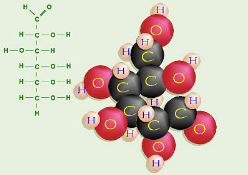- Escambia County Public Schools
- Biology End of Course Review
- SC.912.L.18.1 Macromolecules
Science
Page Navigation
- Home
- Elementary Science Curriculum
-
Biology End of Course Review
- Biology EOC Review
- SC.912.N.1.1 Scientific Method
- SC.912.L.18.12 Properties of Water
- SC.912.l.18.9 Photosynthesis and Cellular Respiration
- SC.912.L.18.1 Macromolecules
- SC.912.L.16.17 Mitosis and Meiosis
- SC.912.L.16.3 DNA Replication
- SC.912.L.14.3 Cell Structure
- SC.912.L.14.1 Cell Theory
- SC.912.L.17.20 Human Impact
- SC.912.L.17.9 Food Webs and Energy Transfer
- SC.912.L.17.5 Population Size
- SC.912.L.16.13 Reproductive System
- SC.912.L.16.10 Biotechnology
- SC.912.L.14.52 Immune System
- SC.912.L.14.36 Cardiovascular System
- SC.912.L.14.26 The Brain
- SC.912.L.14.7 Plant Structure
- SC.912.L.16.1 Genetics
- SC.912.L.15.13 Natural Selection
- SC.912.L.15.8 Origin of Life
- SC.912.l.15.6 Classification
- SC.912.L.15.1 Evolution
SC.912.L.18.1 Macromolecules
ORGANISMS, POPULATIONS AND ECOSYSTEMS
CLASSIFICATION, HEREDITY AND EVOLUTION
WHAT YOU NEED TO KNOW
-
- You need to know the basic molecular structure and primary functions of carbohydrates, proteins, lipids, and nucleic acids.
- You need to know the role of enzymes as catalysts that lower the activation energy of biochemical reactions.
- You need to know how factors such as pH and temperature affect enzyme activity.
EXAMPLE ONE
-
As food travels through the digestive system, it is exposed to a variety of pH levels. The stomach has a pH of 2 due to the presence of hydrochloride acid (HCl), and the small intestine has a pH ranging from 7 to 9. HCl converts pepsinogen into pepsin, an enzyme that digests proteins in the stomach. Which of the following most likely happens to pepsin as it enters the small intestine?
A. It becomes inactive.
B. It begins to replicate.
C. It's shape changes to engulf large proteins.
D. It's activity increases to digest more proteins.
EXAMPLE TWO
-
In living cells, enzymes act as catalysts, which may reduce the amount of activation energy required for a chemical reaction to occur. In the graphs below, pathway x is a solid line representing the uncatalyzed reaction. The dotted line shows the catalyzed reaction. Which graph best illustrates the changes in a reaction when the catalyst reduces the amount of energy required?
EXAMPLE THREE
-
The diagram below shows the general structure of an amino acid. Which type of molecule is formed from amino acids?
A. lipids
B. proteins
C. carbohydrates
D. nucleic acids
EXAMPLE FOUR
-
You are analyzing a compound in the laboratory. You find that it is made up of carbon, hydrogen, and oxygen in a ratio of two hydrogen atoms for each carbon atom. How will you classify the compound?
A. lipid
B. protein
C. carbohydrate
D. nucleic acid
EXAMPLE FIVE
-
Fats, oils and cholesterol are all types of what?
A. cell membranes
B. hormones
C. lipids
D. fatty acids
EXAMPLE SIX
-
RNA and DNA are which type of macromolecules?
A. carbohydrate
B. lipid
C. nucleic acid
D. protein
EXAMPLE SEVEN
-
What will most likely happen if an appropriate enzyme is added to a chemical reaction?
A. The reaction rate will increase.
B. The equilibrium of the reaction will be maintained.
C. The reaction rate will decrease.
D. The reaction will stop.
EXAMPLE EIGHT
-
A sugar, a phosphate group, and a nitrogen base form the building blocks of which organic compound?
A. carbohydrates
B. lipids
C. nucleic acids
D. proteins
EXAMPLE NINE
-
The human body maintains a temperature of around 98.6 degrees at all times. Enzymes are involved in almost every chemical reaction in the body. Which of the following describes the connection between these two statements?
A. Enzymes function best at a specific temperature.
B. The body needs to be warm to prevent hypothermia.
C. The body is kept relatively warm to prevent too much enzyme action.
D. There is no connection between the two statements.
EXAMPLE TEN
-
The enzyme lactase will break down the sugar lactose into which of the following components?
A. monosaccharides
B. nucleic acids
C. amino acids
D. phospholipids
BIOLOGICAL MOLECULES
MACROMOLECULES - IN DEPTH
IN YOUR BOOK
-
General Biology - Section 2.3, pgs. 44-49, Section 2.5, pg. 54
Honors Biology - Sections 2.3 and 2.4, pgs. 37-45





